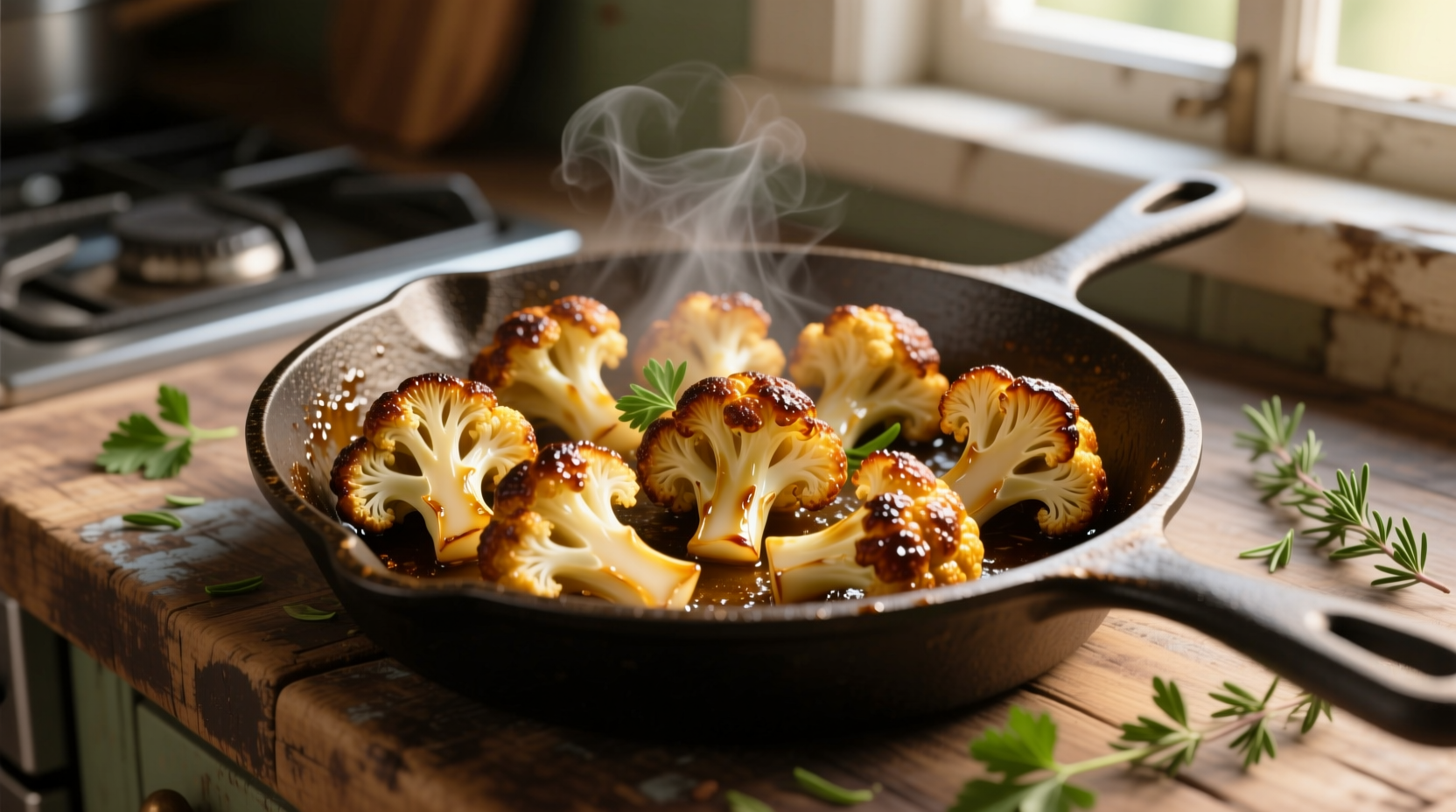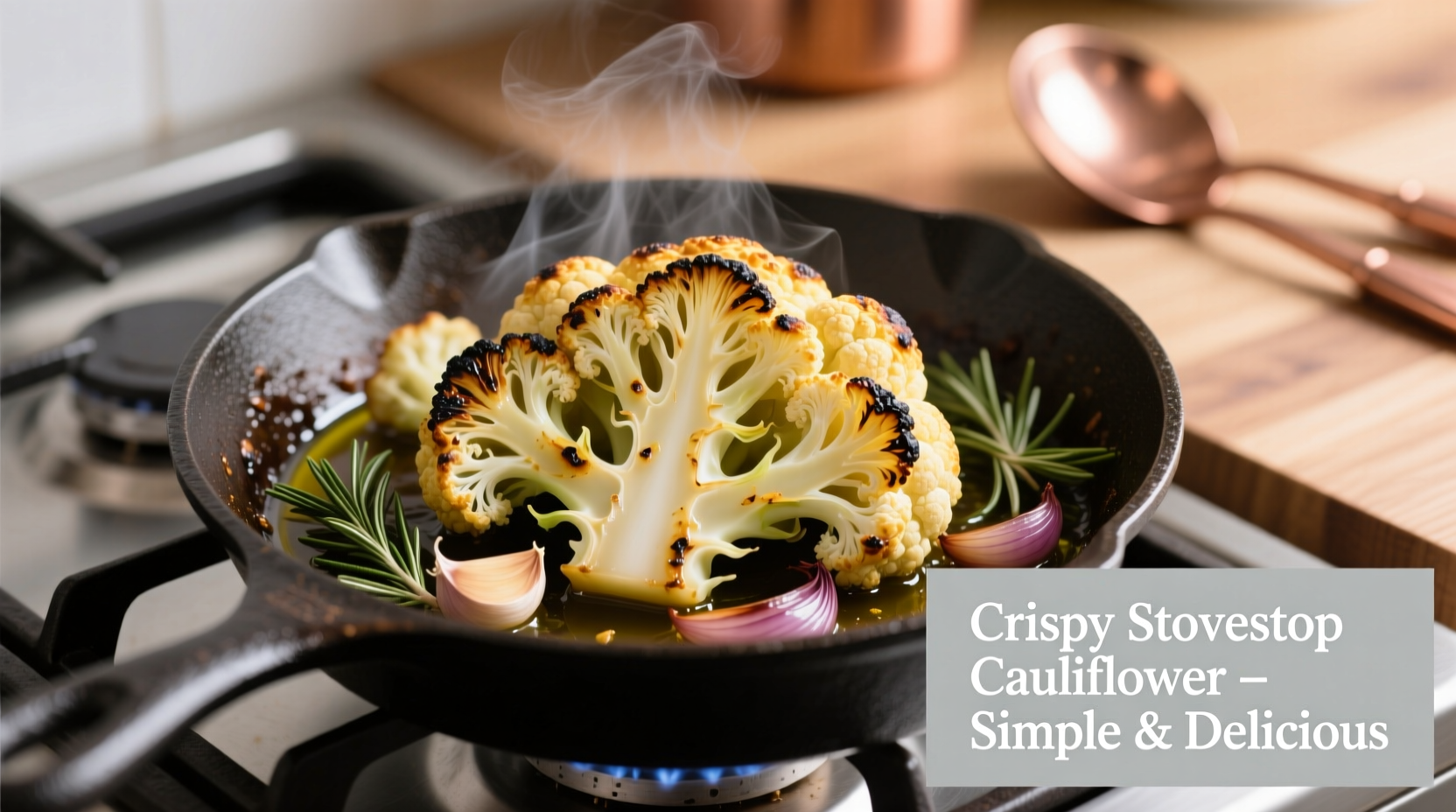Why Stovetop Cooking Elevates Your Cauliflower
While many reach for the oven or microwave, stovetop cooking delivers superior texture and flavor development for cauliflower. The direct heat creates beautiful caramelization that enhances the vegetable's natural nuttiness while maintaining a satisfying bite. Unlike boiling which leaches nutrients, pan-frying preserves up to 30% more vitamin C according to USDA research on vegetable preparation methods. Professional chefs prefer this method for its speed and control—you can adjust heat instantly and monitor browning in real time.
Essential Equipment and Ingredient Checklist
Don't overcomplicate your setup. You need just three essentials:
- A heavy-bottomed skillet (cast iron or stainless steel works best)
- Sharp chef's knife and cutting board
- Wooden spatula for flipping
For ingredients, select a firm cauliflower head with tight, creamy-white florets and fresh green leaves. Avoid any with brown spots or separation between florets. One medium head (about 2 pounds) serves 2-3 people.

Step-by-Step Cooking Process with Visual Cues
Follow this chef-tested method for perfectly cooked stovetop cauliflower every time:
- Prep the cauliflower: Remove outer leaves, cut stem flush with base, then slice vertically through the core. Break into uniform 1.5-inch florets—consistency prevents uneven cooking
- Dry thoroughly: Pat florets completely dry with paper towels (moisture causes steaming instead of browning)
- Heat the pan: Warm 2 tbsp oil (avocado or olive) over medium heat for 2 minutes until shimmering but not smoking
- Arrange strategically: Place florets cut-side down in single layer with space between pieces—overcrowding creates steam
- First sear: Cook undisturbed 5-7 minutes until deep golden brown—resist flipping early!
- Finish cooking: Flip with spatula, add 2 tbsp water, cover immediately, and steam 3-4 minutes until tender-crisp
| Cooking Method | Time Required | Texture Result | Nutrient Retention |
|---|---|---|---|
| Stovetop Pan-Frying | 15-20 minutes | Crisp exterior, tender interior | High (minimal water contact) |
| Boiling | 8-10 minutes | Uniformly soft | Low (water-soluble nutrients lost) |
| Oven Roasting | 25-30 minutes | Dry, chewy edges | Moderate |
Avoid These Common Stovetop Mistakes
Even experienced cooks make these errors that compromise results:
- Overcrowding the pan: Causes steaming instead of searing—cook in batches if needed
- Flipping too early: Wait until florets release naturally from the pan surface
- Using wet florets: Always dry thoroughly after washing
- Incorrect heat level: Medium is ideal—too high burns before cooking through
Flavor Variations for Every Palate
Transform basic cooked cauliflower with these professional finishing techniques:
- Classic garlic-herb: Add 2 minced garlic cloves and 1 tsp thyme in the last 2 minutes
- Spicy North African: Toss with 1 tsp cumin, 1/2 tsp smoked paprika, and lemon zest after cooking
- Creamy Parmesan: Stir in 2 tbsp grated Parmesan and 1 tbsp nutritional yeast at the end
- Asian-inspired: Finish with 1 tbsp tamari, 1 tsp sesame oil, and toasted sesame seeds
When Stovetop Isn't the Best Method
While ideal for most situations, stovetop cooking has specific context boundaries. Choose alternative methods when:
- You're cooking for more than 4 people (roasting handles larger quantities better)
- You want completely uniform texture throughout (steaming achieves this)
- You're preparing a puree or soup base (boiling works more efficiently)
- You need hands-off cooking (roasting requires less attention)
Perfect Pairing and Leftover Ideas
Serve your perfectly cooked cauliflower immediately with:
- Grilled chicken or fish as a complete meal
- Over quinoa or brown rice for vegetarian option
- With lemon-dill yogurt sauce for dipping
Transform leftovers within 3-4 days by:
- Chopping finely and adding to omelets
- Blending into creamy soups
- Using in grain bowls with tahini dressing











 浙公网安备
33010002000092号
浙公网安备
33010002000092号 浙B2-20120091-4
浙B2-20120091-4